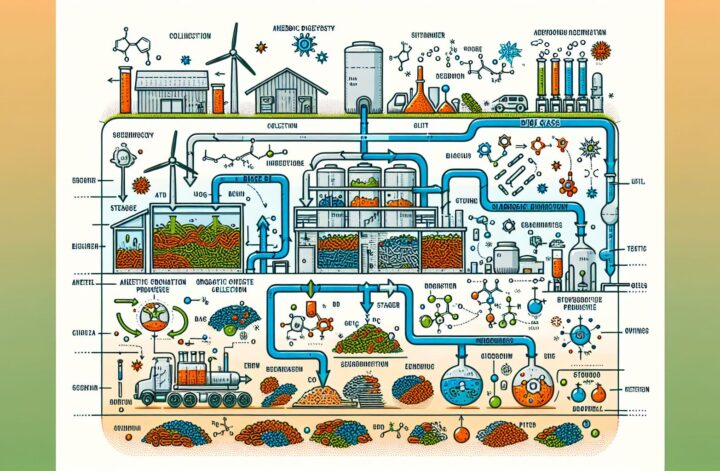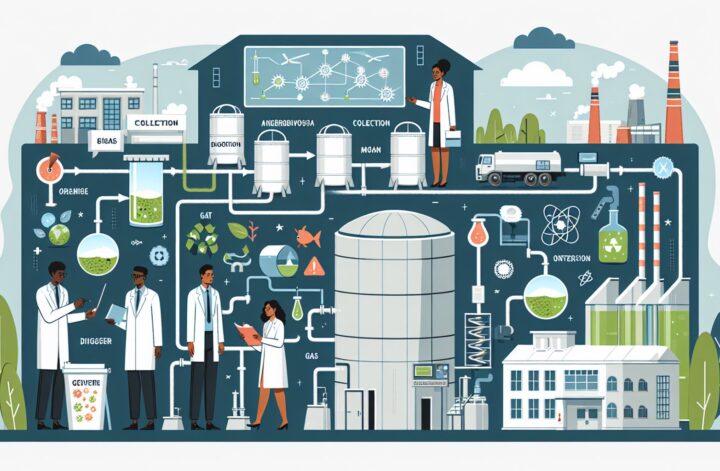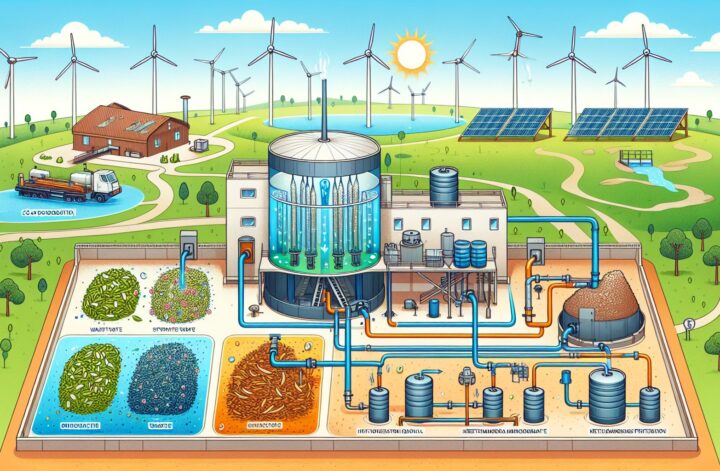Natural resources are rapidly dwindling due to increasing global demand. This scarcity has resulted in an urgent need to explore renewable energy options. Within this quest for a sustainable future, biogas has gained significant traction recently. Biogas, primarily composed of methane and carbon dioxide, is produced from organic materials’ anaerobic decomposition. Apart from its role in energy production, it provides an efficient solution for organic waste treatment.
In this article, we will delve into the intricacies of biogas production, its upgrading, and its impact on renewable energy generation.
The Underpinnings of Biogas Production
Biogas production is a practical and environmentally-friendly solution to address the dual problem of energy scarcity and waste disposal. This is achieved through a complex but efficient process known as Anaerobic Digestion (AD)[^1^].
In the first stage of digestion, known as hydrolysis, complex polymers present in the waste are broken down into simpler monomers by hydrolytic bacteria. Acidogenesis follows, during which acidogens convert the monomers into volatile fatty acids and other by-products. These are then converted into hydrogen, carbon dioxide and acetate, in a stage known as acetogenesis. The final stage, known as methanogenesis, involves the conversion of these outputs into methane and carbon dioxide, forming biogas[^2^].
Biogas Upgrading: Purifying Energy
While biogas is a viable energy source, it isn’t ready for immediate use due to its impurities and low methane concentration. Hence, biogas upgrading plays a crucial role in enhancing the gas quality while ensuring its efficient utilization.
Common upgrading techniques include pressure swing absorption, water scrubbing, and membrane separation. The chosen method depends on factors such as biogas production rates, the desired quality, and the presence of specific contaminants[^3^].
One efficient way of upgrading biogas is through biogas scrubbing, which aids in the removal of corrosive and harmful substances, especially hydrogen sulfide, which can corrode equipment and form harmful emissions when burned.
Biogas and Renewable Energy
Biogas, once upgraded, provides a powerful renewable energy source. It can be utilized in various applications like heat and electricity generation and biofuel production.
As a Combined Heat and Power (CHP) system, biogas can serve dual purposes in a single process: generating electricity and heat. This significantly increases the efficiency of energy utilization. Moreover, biogas can replace fossil fuels in transportation and domestic use, further reducing greenhouse gas emissions[^4^].
The Way Forward
Biogas could be the answer to urgent energy and environmental concerns, provided it’s harnessed efficiently. Investing in research and development of scalable, cost-effective biogas production and upgrading technologies could pave the way for a greener and more sustainable future.
Our world has been crying out for sustainable solutions. Biogas production points towards a renewable source of energy that offers a two-fold benefit – managing our accumulated waste and providing us with a potentially unlimited source of energy. Harnessing this resource effectively could be exactly what we need to steer us into a future of energy security and environmental sustainability.
[^1^]: Smith, M., Ross, A.B., Wilson, P., Banks, C.J., Evershed, R.P. (2019): Microbes and the transformation of muck: early farming and substrates of growth. In: The Science of a Waste World. Routledge, pp. 39-64.
[^2^]: Ghosh, S., & Bhattacharyya, B. K. (2019). Microbial and Enzyme Technologies in Environmental Management. CRC Press. DOI: 10.1201/b21966
[^3^]: Pereira, M. A., Pires, O. R., Mota, R., & Alves, M. M. (2020). Biogas Upgrading: Current Technologies and Future Perspectives. In Biogas (pp. 175-197). Elsevier. DOI: 10.1016/B978-0-12-815497-7.00026-8
[^4^]: Pant, D., Singh, A., Van Bogaert, G., Olsen, S. I., Nigam, P. S., Diels, L., & Vanbroekhoven, K. (2012). Bioelectrochemical systems (BES) for sustainable energy production and product recovery from organic wastes and industrial wastewaters. RSC Advances, 2(4), 1248-1263. DOI: 10.1039/c2ra19806h
End of Article




